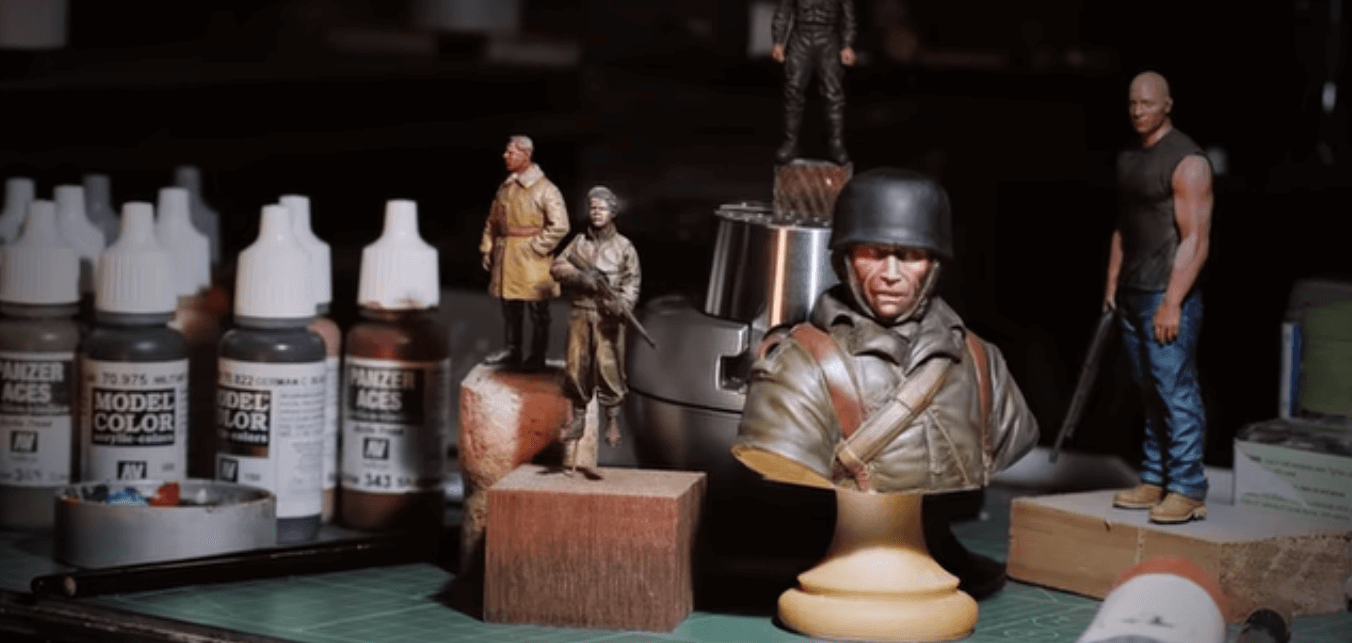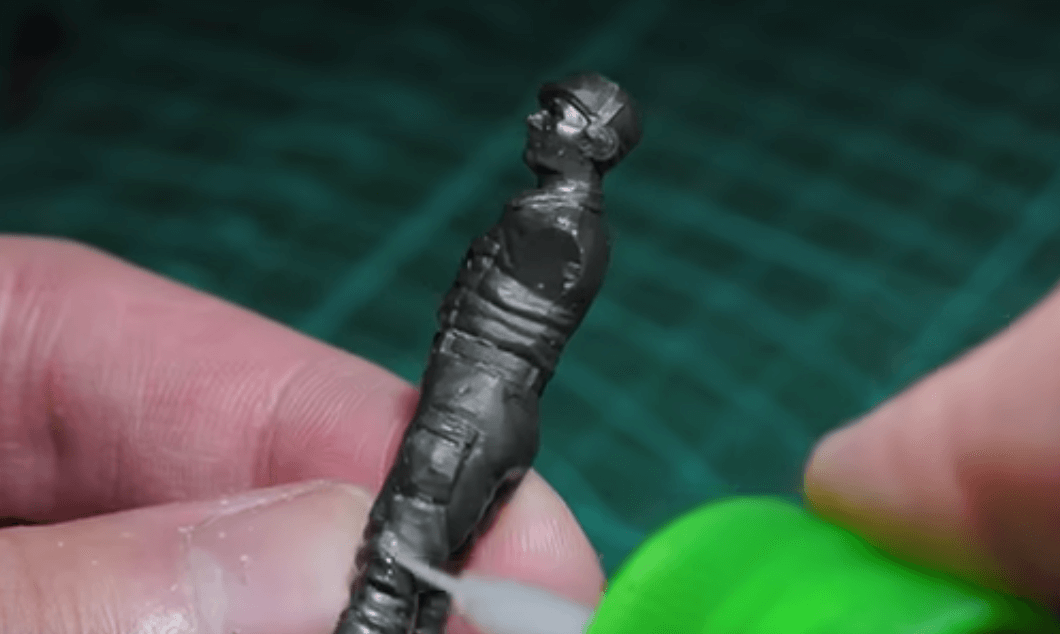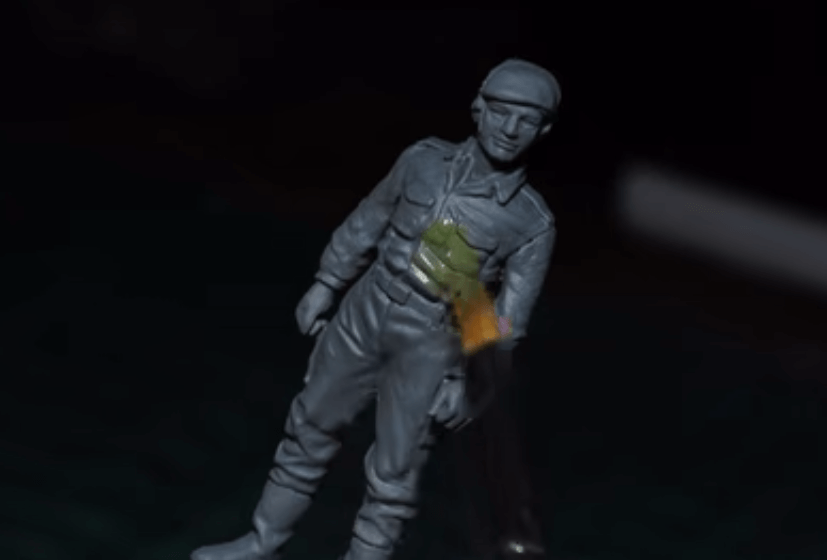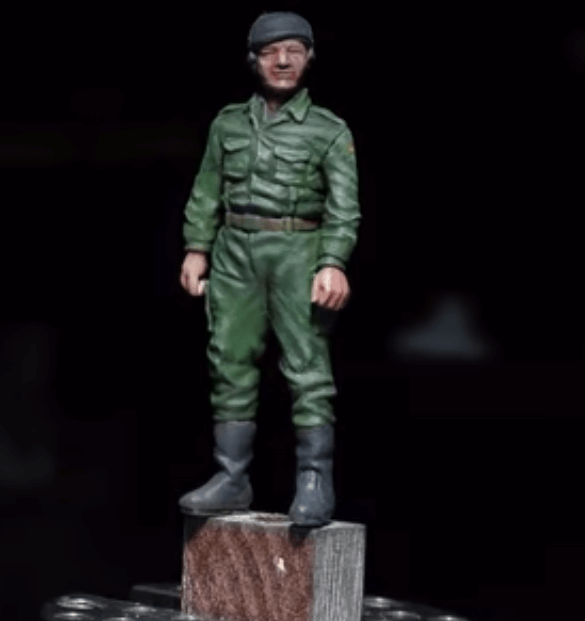Cómo pintar figuras de acción, hay algunas cosas que debes tener en cuenta. En esta entrada del blog, te explicaremos los aspectos básicos para que puedas crear tu propia obra maestra. En primer lugar, echemos un vistazo a los tipos de pintura que puedes utilizar. Tienes acrílicos, esmaltes y marcas como Model Master, que tienen base de laca. Luego está la preparación de la superficie: ¿qué tipo de superficie tienes? ¿La propia figura o tal vez un accesorio? Por último, pasamos al proceso de pintura propiamente dicho, con algunos pasos y técnicas básicos que te ayudarán a empezar. ¡Empecemos!
NOTA: Esta entrada del blog está dirigida a pintores más avanzados y no a principiantes. Si eres nuevo en el mundo de la pintura, asegúrate de consultar primero nuestras otras entradas sobre el tema.
1. Elija la pintura adecuada
Cuando se trata de pintar figuras de acción, hay que tener en cuenta algunas cosas para conseguir los mejores resultados. En primer lugar, es importante elegir la pintura adecuada. La pintura acrílica es una buena opción para las figuras de acción porque es duradera y puede aplicarse directamente sobre el plástico. Sin embargo, si quiere conseguir un aspecto más natural, la pintura al agua puede ser una mejor opción.
2. Preparar la figura para la pintura
Antes de pintar una figura, es importante dedicar tiempo a preparar la superficie. Esto ayudará a garantizar que la pintura se adhiera correctamente y no se desconche o descascare más tarde. Para preparar la figura para la pintura, empieza por limpiarla con un bloque de jabón suave y agua. A continuación, lija ligeramente las zonas ásperas con papel de lija de grano fino. Cuando la figura esté lisa, aplica una capa de imprimación. Esto ayudará a que la pintura se adhiera mejor a la superficie y también proporcionará un color de fondo uniforme. Deja que la imprimación se seque por completo antes de pasar a la pintura. Con un poco de preparación, seguro que obtendrás grandes resultados al pintar tu figura.
3. Pintar la figura
Pintar la figura puede ser una experiencia gratificante y desafiante. Aunque puede resultar tentador simplemente coger un pincel y empezar a pintar, hay algunas cosas que debe tener en cuenta para ayudarle a crear un cuadro de éxito. En primer lugar, tómate un tiempo para estudiar la figura que quieres pintar. Fíjate en sus proporciones y considera la forma del cuerpo. A continuación, decide los colores que quieres utilizar. Piensa en cómo incidirá la luz en la figura y en el ambiente que quieres crear. Cuando tengas un plan, empieza a pintar. Trabaja despacio y con cuidado, prestando atención a los detalles. Recuerda que pintar la figura no consiste en crear una réplica perfecta, sino en captar su esencia. Con la práctica, serás capaz de pintar figuras tan bellas como únicas.
4. Dejar secar la pintura
Dejar secar la pintura es esencial para pintar figuras de acción. Si la pintura no está completamente seca, puede mancharse o correrse, arruinando el aspecto de la figura. Además, la pintura húmeda puede ser difícil de trabajar y dificultar la obtención del efecto deseado. Dejar secar la pintura también permite comprobar si se han cometido errores al pintar. Una vez seca la pintura, puedes lijar las imperfecciones y volver a pintar las zonas que lo necesiten. Así que, la próxima vez que pintes tus figuras de acción, asegúrate de dejar que la pintura se seque por completo antes de pasar al siguiente paso.
5. Sellar y proteger la pintura
Para sellar y proteger la pintura, primero hay que limpiar la superficie de la figura de acción con alcohol. Si hay algún residuo grasiento en la superficie de la figura, impedirá que la pintura se adhiera correctamente. Una vez que la superficie esté limpia y seca, puede sellar y proteger la pintura aplicando una capa transparente de laca o barniz. Asegúrate de utilizar un pincel o una esponja aplicadora para evitar dejar huellas dactilares en la figura. Aplica varias capas finas, dejando que cada capa se seque completamente antes de aplicar la siguiente. Cuando hayas terminado, tu figura tendrá una capa brillante y protectora que ayudará a sellar y proteger la pintura durante muchos años. Gracias por leernos.
6. Exhibe tu figura de acción pintada.
Exponer una figura de acción pintada es una forma estupenda de presumir de creatividad y trabajo. Tanto si decides exponer tu figura en una estantería, en una caja de sombra o incluso en un marco, debes tener en cuenta algunas cosas para que luzca lo mejor posible. En primer lugar, tenga en cuenta la iluminación de la zona de exposición elegida. Demasiada luz puede desteñir los colores, mientras que una luz insuficiente puede dificultar la visión de los detalles. En segundo lugar, asegúrese de que la figura está bien montada y de que no hay riesgo de que se caiga y se rompa. Y por último, tómese su tiempo para colocar otros elementos alrededor de la figura, como accesorios o atrezzo, para crear una exposición equilibrada y llamativa. Con un poco de planificación, puedes transformar tu figura de acción pintada en una obra de arte de la que estarás orgulloso de presumir.
Conclusión
Después de lijar la figura, aplica una fina capa de pintura. Puedes utilizar pinturas acrílicas para este proyecto. Deja secar la primera capa antes de dar más. Cuando esté satisfecho con la cobertura, añada detalles y reflejos con un pincel más fino. Por último, sella el trabajo de pintura con un barniz transparente para evitar que se astille o se decolore con el tiempo. Con estos consejos, podrás dar una nueva vida a tus figuras de acción.



